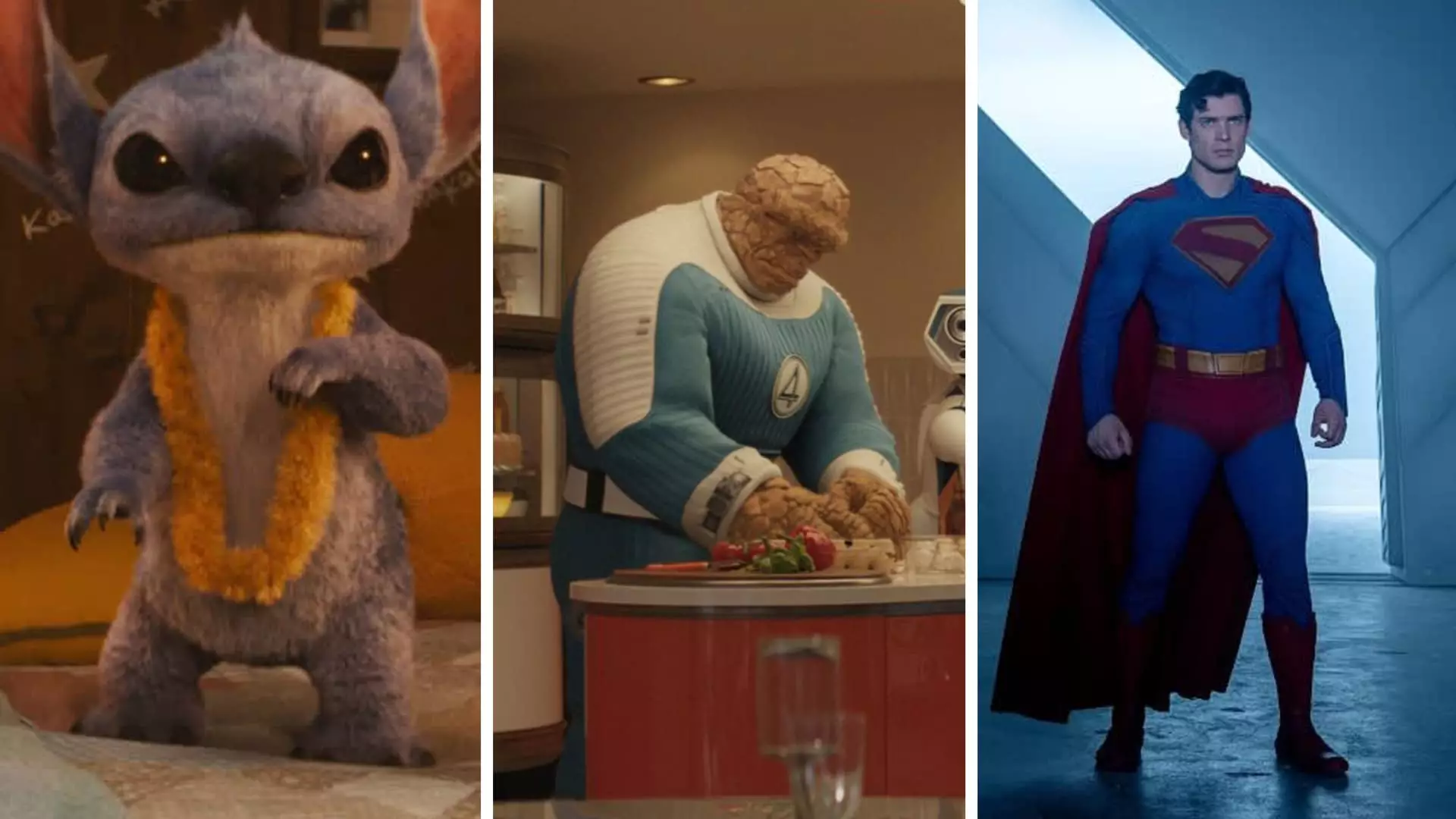Despite Hollywood’s boasts of a summer season that seemingly managed to recover somewhat from recent setbacks, beneath the surface lies a stark reality: the box office is not the resilient force it claims to be. The recent figures, hovering around $3.75 billion, may seem promising compared to last year’s total, but they are a far cry from the pre-pandemic glory days where annual summer revenues often topped $4 billion. This tempting illusion of revival masks a fractured industry struggling to find its footing amid shifting consumer behaviors, devalued franchises, and a Hollywood that’s been reluctant to innovate beyond its familiar, overused formula.
The overarching narrative suggests that supercharged blockbusters and superhero spectacles would once again be the saving grace. Yet, the truth is that the industry’s reliance on nostalgia and franchise fatigue has created a cycle of diminishing returns. The shock of pandemic shutdowns and the subsequent strikes further destabilized the ecosystem, creating a market that is increasingly unpredictable and disinterested in the big-budget, CGI-heavy fare that once drove audiences in droves. Hollywood’s optimism that new entries in beloved franchises or reboots will fill theaters is increasingly misplaced in a landscape where moviegoers are more discerning, and often, more skeptical.
Behind the Numbers: A Deepening Malaise
When examining the actual box office figures from previous years, a pattern becomes glaringly evident: the industry’s highs are becoming less impressive, and the lows more problematic. The long-standing dominance of blockbuster titles had previously kept summer revenues buoyant — “Jurassic World,” “Avengers,” and “Star Wars” consistently pulled in astronomical numbers. But recent summers show a clear decline. The 2024 summer haul is only marginally above last year’s $3.67 billion, itself a far cry from the $4 billion target Hollywood set for 2025.
What’s revealing is that even the highest-grossing films lately—such as Disney’s “Lilo & Stitch” remake or “Superman”—fail to cross the $400 million domestic threshold, a stark departure from the past when films like “Barbie,” “Top Gun Maverick,” or “Inside Out 2” easily surpassed $600 million. This signals a fundamental shift: audiences are no longer willing to flock en masse for sanitized, franchise-driven spectacles that lack genuine substance or innovation.
Furthermore, Hollywood’s focus on franchise saturation results in a paradoxical situation where the most anticipated films rarely meet expectations. The studios may hype their upcoming releases as blockbusters, but their modest opening numbers suggest that audiences are simply not buying into the same old recycled narratives. The notion that “more of the same” will save the industry is a fallacy; it ignores a cultural shift where viewers crave authentic storytelling, relatable characters, and meaningful experiences that go beyond CGI-driven spectacles.
The Myth of a Posterity-Driven Recovery
Industry leaders like AMC’s Adam Aron and Cinemark’s Sean Gamble appear overly optimistic, proclaiming a possible sustained rebound from the recent lull. But this confidence is misleading. The so-called “summer resurgence” largely stems from a handful of mid-tier successes, not a genuine revitalization of the theatrical experience. When the final months of summer roll around, and the industry looks towards a string of mediocre releases, the illusion of a vibrant recovery fades.
Fall and early winter are traditionally slow for Hollywood, and this year is no exception. The industry’s expectation of a late-year upswing hinges on big-ticket sequels like “Wicked” and “Zootopia 2,” which may or may not live up to expectations—particularly given the diminishing power of pre-release hype. The notion that these sequels will singlehandedly revive the box office is overoptimistic at best. The market has become too saturated, and consumers are increasingly selective, often choosing streaming or alternative entertainment options over crowded theaters.
It’s worth noting that the supposed “resurgence” is largely a statistical mirage; what’s happening behind the scenes is that studios are trying to cling to old paradigms that no longer resonate. The entertainment industry’s continued focus on high-budget franchise filmmaking reflects a lack of confidence in original content, and this strategy is inherently flawed. As audiences continue to drift away from mainstream Hollywood fare, studios risk accelerating a decline that could push the industry further into irrelevance or force an overdue reckoning with its creative and business practices.
The Core Problem: An Industry Out of Touch
The reliance on franchises, reboots, and franchise-based reboots has created a predictable but ultimately unsustainable cycle. Hollywood’s obsession with safe bets alienates segments of its core audience—those looking for stories that challenge, inspire, or simply entertain without feeling like a corporate product. This entrenched risk aversion not only stifles innovation but also deteriorates the cultural cachet of cinema as an art form.
Furthermore, studio executives continue to chase short-term box office gains, often at the expense of long-term brand health. This shortsightedness results in films that are bland, formulaic, and uninspired, which in turn discourages audiences from returning. As a result, theaters become less of a cultural hub and more of a gamble, where only the sure bets—like household names and established franchises—still draw crowds, yet with diminishing returns and diminishing excitement.
The true challenge ahead lies in Hollywood’s inability to adapt creatively or strategically. The pandemic and strikes have exposed the cracks in this business model, but too many industry leaders remain trapped in their complacency, convinced that sequels and remakes are the answer to all problems. That attitude risks deepening an already alarming decline—transforming theaters from vibrant cultural spaces into relics of a bygone era of blockbuster dominance. If Hollywood continues down this path, the image of cinemas as the heart of entertainment will become increasingly mythological, replaced by streaming giants and on-demand content that consumers now prefer.

